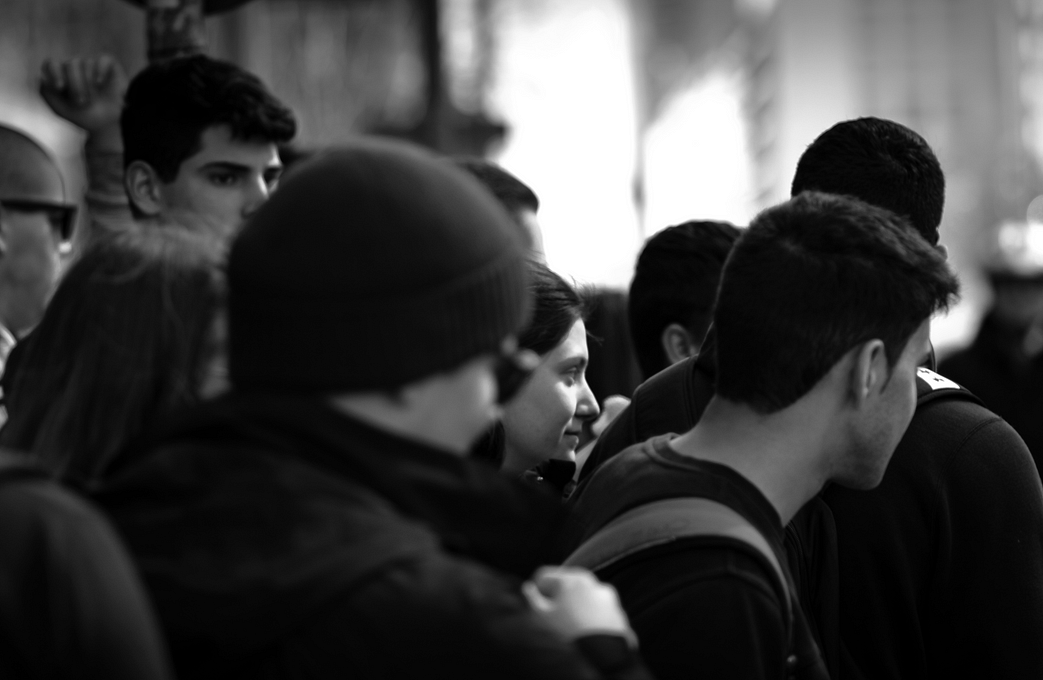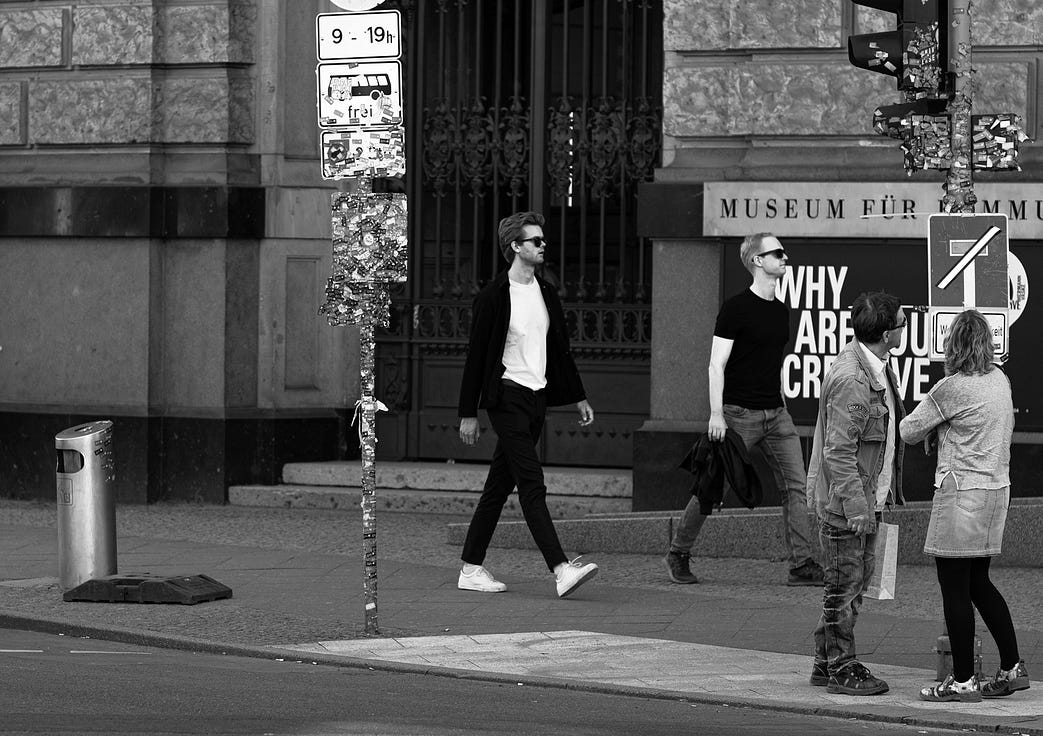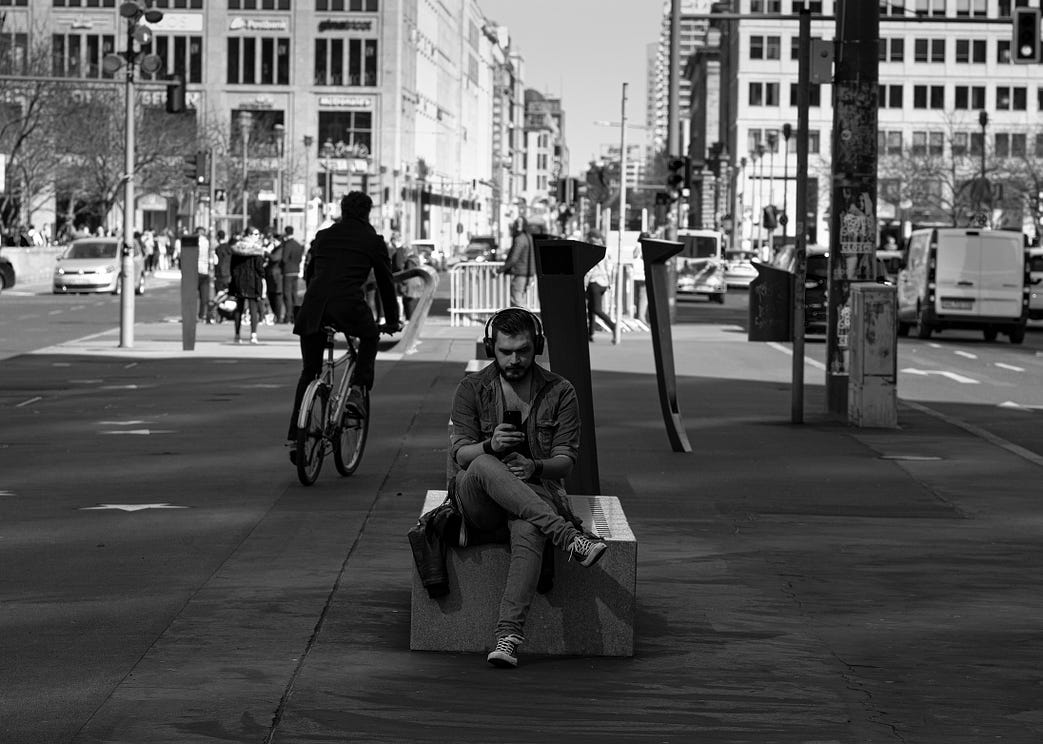The decisive moment in photography should always be on your mind — if you want to take great photos.
When I go out into the city to do street photography, I pack a camera with my favourite lens attached, normally 50 mm.
The moment I enter the street, I’m looking, watching, and noticing movements; my brain is getting into gear. I want to go to another part of the city, away from my own neighbourhood. That way I’ll see something new, and it’ll help to wake up my mind to the fresh sights.
The decisive moment is all around you, it’s always there. But it depends on what your brain is focused on that day. We don’t create the decisive moment, it’s up to the photographer to see it as it reveals itself.

You can see your decisive moment, the shot you’re looking for, when a person walks out of a doorway, or rides past on a bicycle. It could be the interaction between an animal and a person, a dog and it’s owner. It’s in everything. There’s a Zen connection to the decisive moment.
One lens of choice, and the street is enough to capture a moment that will turn out to be a great photo. Something to be proud of and keep safely away from the thousands of other photos that you’re not sure about.
A person walking around a corner, a startled expression, two people greeting each other, all of them offer an opportunity to look for the precise moment when its truth is revealed.

I’ve often tried to head out with an idea about what I want to photograph, maybe something like people wearing a particular colour. Last year I went out telling myself that people wearing mustard coloured tops might be fun to watch out for. I soon realized that I’d thought of that because I’d already seen mustard colours along the streets. It was that spring’s fashion colour. So, when I realized this, it took the punch out my feelings for it. Better to just go out and look.
Intention is always important, it creates concentration, but when too narrow an idea dominates the mind then you might miss a lot of action on the street.
Henri Cartier Bresson coined the photographer’s phrase, “The decisive moment”, when he tried to sum up what he was doing when he took photos.
The decisive moment is that small moment that epitomizes an action. It’s also when a composition falls into place and shows us something fleeting, something that many people normally don’t see, but happens all the time.
Fleeting moments that only an astute photographer would see. The photographer sees the action, follows it, and recognizes that this small cycle will rise and fall until the moment is past; street photographers hunt for this moment, and with camera in hand are ready to get the shot.
Everybody is so busy. They have little time to stop and look in the same way that a photographer does. If you go out with your camera and hunt down interesting moments of life on the street, you will discover that you are confronted with so many combinations of activity that it can become confusing.

The street photographer’s task is to whittle things down to the essentials.
People are like herd animals. We all want to feel safe and secure in public places, so you’ll notice that crowds move like flocks of birds along the streets, people engage each other for small moments as the pass through tight spaces, they offer respect, stop, open doors, and other people barge through like they own the street. It’s all the positives and negatives working together to create a ‘stop and start’ feeling on the street. You can use that to get a feeling for what’s happening in the particular place that you’re looking at.
I don’t want to use words like “predict”, or “anticipate”, because I think it leads to a mentality that isn’t helpful. Better to think with knowledge of human nature, the human condition. If you are a photographer, especially a street photographer, then the human condition, the undertow of emotions that drive people to do things is a focal point for thinking while out on the street.
You may see a person who has separated themselves from the crowd, they’re off doing their own thing, going somewhere that only they know about — everybody’s got a secret. They are interesting to you as a photographer. To watch them, get some quick shots in and find that moment that reveals their intent can end up as a great shot.
Knowledge of human behaviour helps us. As photographers, we should always study people, become people watchers, and ask many questions about why people do things. We draw our own conclusions and find out if we are right or wrong when we’re on the street with a camera in hand.
I like to ponder what a person might be doing, where are they going, and why they are in a rush? It helps to get the mind into gear, to focus. If you become focused, you will begin to see things. Small actions become meaningful. Take photos and let the mind and camera work together.
The fact that we all want to be safe and secure in public means that our minds are on high alert, this helps. Our intuition is often more accurate when we are more aware of our surroundings than when we are sitting at home reading a book, or watching a movie.
Combining knowledge about people, want they want, what they do, and intuition are the tools of the street photographer. It helps us to understand why one person has shifty eyes, and another looks sleepy, while others walk about with blank faces.
I once took a photo of a man who sat down in the middle of a busy plaza. He opened his mobile and started to read. It was so interesting how he seemed oblivious of his surroundings after the page was open, yet two minutes earlier he was scuttling along the road, across a red light, and fumbling as he pulled a phone from his leather shoulder bag. I imagined he was on his lunch break, and that explained the rush away from the office, and out into the fresh air to read his novel. By the way, I took the shot immediately, and it turned out great. The absolute silence that he created for himself was quite evident in the photograph.

I avoided thinking about the shot, and becoming too conscious about everything. I just raised the camera and made sure I was spot on with focus, I had already shifted my position and stood in a good spot to take a shot. Then pressed the button. It was just one shot. It was afterwards that it occurred to me that I ‘knew’ he would sit down somewhere close to me, which is why I got into position. Intuition, which feels a little like magic when it works well.
After that, I felt it would be an imposition if I tried to get more photos of him— after all, he wanted his peace and quiet.
Practice makes perfect, taking many photos over time gives you enormous feedback on what’s happening in your mind when you are busy watching people, and taking shots.
Much better to allow yourself to stay in action on the street and get the shots you feel you want, than to become too “schooly” about things and slow yourself down. When you get home, start looking through the shots you took, guaranteed, you’ll have a few magical moments and be so glad you went out into the cold.
Street Photography article
Further Reading from Berlin Notes on Medium Platform
Leave a Reply
You must be logged in to post a comment.